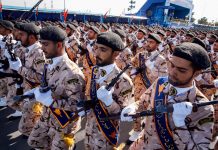Mystery over cause of Egypt plane crash
By Al Arabiya with Agencies Sunday, 01 November 2015
Egyptian President Abdel Fattah al-Sissi Sunday urged people to wait for the outcome of an investigation to determine the exact reason a Russian airliner crashed, killing all 224 people on board, including 25 children. “In such cases, leave it to specialists to determine the cause of the plane crash because it is a subject of an extensive and complicated technical study,” state news agency MENA quoted Sisi as telling a gathering of army officers. On Saturday, a Russian passenger airliner crashed in a remote mountainous part of Egypt’s Sinai Peninsula 23 minutes after taking off from a popular Red Sea resort. The cause of the crash was not known, but two major European airlines announced they would stop flying over the area for safety reasons after a local affiliate of ISIS claimed it “brought down” the aircraft. Russia’s transport minister dismissed that claim as not credible. A Reuters reporter at the civil aviation ministry said Egyptian analysts have begun examining the contents of two black boxes recovered from the Russian airliner, and said it could take days to retrieve the data. Egypt’s Prime Minister Sherif Ismail (2nd L) and Tourism Minister Hisham Zaazou look at the remains of a Russian airliner which crashed in central Sinai. (Reuters).
Almost everyone on board the Airbus-A321-200 operated by the Moscow-based Metrojet airline was Russian; Ukraine said four of its citizens were passengers. Russian officials did not give a specific breakdown of the 217 passengers’ ages and genders, but said 25 were children. There were seven crew members. A civil aviation ministry statement said the plane’s wreckage was found in the Hassana area some 70 kilometers south of the city of el-Arish, in the general area of northern Sinai where Egyptian security forces have for years battled local Islamic militants who in recent months claimed allegiance to ISIS. The ministry said the plane took off from the resort city of Sharm el-Sheikh shortly before 6 a.m. for St. Petersburg in Russia and disappeared from radar screens 23 minutes after takeoff. Egyptian Prime Minister Sherif Ismail toured the crash site and later told a Cairo news conference that 129 bodies had been recovered. Photos from the site released by his office showed the badly damaged sky blue tail of the aircraft, with the Metrojet logo still visible. In the background, heaps of smoldering debris dotted the barren terrain.
Relatives of victims of a Russian airliner which crashed in Egypt, mourns at a hotel near Pulkovo airport in St. Petersburg, Russia, October 31, 2015. (Reuters). One photo showed a member of the search team holding the flight recorder, or black box, which Ismail said would be scrutinized as investigators try to determine what caused the crash. Russian investigators were expected to arrive in Egypt on Sunday. Natalya Trukhacheva, identified as the wife of co-pilot Sergei Trukachev, said in an interview with Russian state-controlled NTV that her husband had complained about the plane’s condition. She said a daughter “called him up before he flew out.
He complained before the flight that the technical condition of the aircraft left much to be desired.” Clothes are pictured on the ground at the site where a Russian airliner crashed in central Sinai near El Arish city. (Reuters) One Egyptian official, Ayman al-Muqadem of the government’s Aviation Incidents Committee, said that before the plane lost contact with air traffic controllers, the pilot had radioed and said the aircraft was experiencing technical problems and that he intended to try and land at the nearest airport. It was impossible to independently confirm whether technical problems were to blame, and no other Egyptian official repeated the claim on Saturday. In a statement on its website, Metrojet said the A321-200 aircraft was in good shape and that the pilot was experienced.
It identified the captain as Valery Nemov and said he had 12,000 hours of flying experience, including 3,860 in A321s. Police open the way for ambulances carrying the bodies of passengers of a Russian airliner which crashed in Sinai, into a morgue in Cairo. (Reuters). Russian Transport Minister Maxim Sokolov said officials from Moscow and Cairo were in touch over the incident. The Egyptian officials, he said, had not confirmed the claim by ISIS militants who said they “brought down a Russian plane over Sinai state with more than 220 Russian crusaders on board.” The militant group did not provide any evidence to back up its claim.
“Based on our contacts with the Egyptian side, the information that the airplane was shot down must not be considered reliable,” Sokolov said, according to a report by the Interfax news agency. An English-language statement issued by the office of the Egyptian president spoke of Russian leader Vladimir Putin commending the efforts made by authorities in Egypt “to uncover the circumstances surrounding the incident.”Militants in northern Sinai have not to date shot down commercial airliners or fighter jets. There have been media reports that they have acquired Russian shoulder-fired, anti-aircraft missiles. But these types of missiles can only be effective against low-flying aircraft or helicopters. The Russian airliner was cruising at 31,000 feet when it lost contact with air traffic controllers, according to Egyptian aviation officials.
In January 2014, Sinai-based militants claimed to have shot down a military helicopter; Egyptian officials at the time acknowledged the helicopter had crashed, but gave no reason. But two major European airlines – Germany’s Lufthansa and Air France – were not taking any chances. Both announced Saturday they would immediately stop flying over Egypt’s Sinai Peninsula for safety reasons until the cause of the crash was determined. Their aircraft would take alternate routes to reach destinations in the region. pokeswomen for the airlines spoke anonymously in line with their respective companies’ regulations. Egypt’s foreign minister, Sameh Shukri, warned “foreign” countries that he did not identify against taking measures that reflect speculations on the cause of the crash.
“That will impact the Egyptian economy and lead to damages. These nations must consider this as well as their relations with Egypt,” he said. Friends and relatives of the crash victims were gathering Saturday at a hotel near St. Petersburg’s Pulkovo airport. Psychologists were meeting with them in a large conference room off the lobby and police kept journalists away. Some left the room occasionally, looking drawn with tear-stained faces. Yulia Zaitseva was one of them. She said her friends, newlyweds Elena Rodina and Alexander Krotov, were on the flight. Both were 33. Zaitseva said Rodina, her friend for 20 years, “really wanted to go to Egypt, though I told her, ‘Why the hell do you want to go to Egypt?'” “She was a very good friend who was ready to give everything to other people. To lose such a friend is like having your hand cut off,” Zaitseva said, adding that Rodina’s parents feel “like their lives are over.”Russian airlines became infamous for poor safety in the early years following the 1991 collapse of the Soviet Union, which caused severe financial troubles and regulatory disorder. Although accidents have diminished in recent years, crashes persist, many of them blamed on human error.
According to Russian news agencies, the flight was chartered by the St. Petersburg-based Brisco tour company. The plane was made in 1997 and has since 2012 been operated by Metrojet. Officers from Russia’s top investigative body raided the offices of Metrojet and Brisco on Saturday, searching the premises and questioning employees. Investigative Committee spokesman Vladimir Markin said agents also took samples of fuel from the airport in the Russian city of Samara where the plane stopped Friday before heading to Sharm el-Sheikh, where it had overnighted. Roughly three million Russian tourists, or nearly a third of all visitors in 2014, come to Egypt every year, mostly to Red Sea resorts in Sinai or in mainland Egypt. “It is too premature to detect the impact this will have on tourism. We need to know what happened first,” Tourism Ministry spokeswoman Rasha Azazi told The Associated Press. There was no sign of anything unusual at Sharm el-Sheikh’s airport just hours after news of the disaster broke. Hundreds of vacationers, mostly from Europe and the Middle East, were arriving and departing.
Flights in the afternoon were leaving at the rate of four to five per hour, with lines for international check-in spilling out the main gates. Pavel Moroz, a 30-year-old engineer from Moscow, arrived in Sharm el-Sheikh on Saturday afternoon on a Metrojet flight. He plans to stay for a week to take a scuba diving course.
“We heard the news a few hours before leaving and thought for a bit about canceling our trip, but then decided to go anyway and everything was fine,” he said as he left the airport.
Russia doubts ISIS claim that it shot down airliner
By Staff writer Al Arabiya News/November 02/15
Moscow cast doubt Saturday on claims by the Islamic State of Iraq and Syria (ISIS) group’s Egyptian affiliate to have downed a Russian passenger jet that crashed in the Sinai Peninsula, killing all 224 people onboard. “This information cannot be considered accurate,” transport minister Maksim Sokolov said in comments cited by Russian news agencies. “We are in close contact with our Egyptian colleagues and aviation authorities in the country. At present, they have no information that would confirm such insinuations,” he added. Egypt’s Prime Minister Sherif Ismail (2nd L) and Tourism Minister Hisham Zaazou look at the remains of a Russian airliner which crashed in central Sinai near El Arish city, north Egypt, October 31, 2015. (Reuters)
Meanwhile, Egypt has recovered the black box of a Russian airliner that crashed Saturday in the restive Sinai Peninsula, killing all 224 people on board, the prime minister’s office said. “The black box was recovered from the tail of the plane and has been sent to be analysed by experts,” the office of Prime Minister Sharif Ismail said, adding that rescuers had recovered 129 bodies from the site of the crash. The remains of a Russian airliner which crashed is seen in central Sinai near El Arish city, north Egypt, October 31, 2015. The Airbus A321, operated by Russian airline Kogalymavia under the brand name Metrojet, carrying 224 passengers crashed into a mountainous area of Egypt’s Sinai peninsula on Saturday shortly after losing radar contact near cruising altitude, killing all aboard. (Reuters) The prime minister added that it was impossible to determine the cause of the Russian plane crash until the black box was examined but that no “irregular” activities were believed to be behind it, Reuters reported. The ISIS affiliate, which is waging a deadly insurgency in the Sinai, had circulated a statement on social media claiming responsibility for the crash, saying it brought down the aircraft in revenge for Russian air strikes against militants in Syria. The Metrojet’s Airbus A-321 with registration number EI-ETJ that crashed in Egypt’s Sinai peninsula, is seen in this picture taken in Antalya, Turkey September 17, 2015. (Reuters)
“The soldiers of the caliphate succeeded in bringing down a Russian plane in Sinai,” its statement said. Several military experts contacted by AFP said it was unlikely that ISIS militants in Sinai would have missiles capable of shooting down a plane flying at 30,000 feet. But they did not discount the possibility that a bomb may have been planted on the plane, or that it could have been hit by a rocket or missile as it lost height due to technical problems. The plane – an Airbus A321-200 operated by Russian carrier Kogalymavia – also known as Metrojet – had reportedly split in two. Other bodies had been found strapped to their seats. A woman reacts at Pulkovo airport in St. Petersburg, Russia, October 31, 2015. (Reuters)
An Egyptian security officer at the site told Reuters by telephone that his team extracted “at least 100 bodies and the rest are still inside,” the officer, who requested anonymity, said. Earlier, Egyptian rescue team reportedly heard voices from the plane, raising hopes that some might still be alive. ost of the passengers on board are believed to be Russian tourists. Russian President Vladimir Putin has ordered Russian rescue teams to visit the site of the crash, while Egypt’s prosecutor general has ordered an investigation.
Russian officials began searching the Moscow offices of Kogalymavia, and have seized documents, Russian state TV reported. “Military planes have discovered the wreckage of the plane… in a mountainous area, and 45 ambulances have been directed to the site to evacuate dead and wounded,” a cabinet statement said earlier. Putin declared a day of mourning after the incident in Egypt. Relatives of victims of a Russian airliner which crashed in Egypt, mourns at a hotel near Pulkovo airport in St. Petersburg, Russia, October 31, 2015. (Reuters) The cause of the crash is not yet known. Kogalymavia said that it saw no grounds to blame human error for the crash of one of its airliners in Egypt, Russian news agencies reported.
An Egyptian soldier prays as emergency workers prepare to unload bodies of victims from the crash of a Russian aircraft over the Sinai peninsula from a police helicopter to ambulances, near Suez, Egypt, Saturday, Oct. 31, 2015. (AP) RIA and Interfax news agencies cited an airline spokeswoman saying that the pilot had 12,000 hours flying experience. She also said that the plane had been fully serviced. Earlier on Friday, Egyptian air traffic control lost contact with the aircraft shortly after it took off from the Red Sea resort of Sharm el-Sheikh to head to Russia, aviation sources told Reuters news agency earlier. The plane was at an altitude of 31,000 feet when it vanished from radar screens, the civilian aviation ministry said in a statement. [With Reuters and AFP]
Russian airliner with 224 people aboard believed shot down by missile over central Sinai
DEBKAfile Special Report October 31, 2015
A Russian civilian plane with 217 passengers and 7 crew aboard crashed, and is belived shot down by a missile, over Sinai over Sinai early Saturday morning, Oct. 31, shortly after taking off from the Sinai resort town of Sharm el-Sheikh for St. Petersburg.
Initial reporting on the fate of the plane was confused and is still not completely clear. It was first reported to be missing after contact was lost with Egyptian air control; it was then said to be safely on its way to Russia over Turkey. Russian aviation sources then reported the A321 to be missing over Cypriot air space. Finally, the Egyptian prime minister’s office Egyptian prime minister’s office confirmed that a Russian passenger plane had crashed n central Sinai and a cabinet level crisis committee had been formed to deal with the crash.
The airliner owned by the small airline Kogalymavia disappeared from screen 23 minutes after takeoff from Sharm el-Sheikh. There were many families with children aboard.
debkafile reports: The first claim by Russian aviation sources that the plane had gone missing over Cyprus was an attempt to draw attention from the likelihood that it was shot down over Sinai, where the former Ansar al-Miqdas, which has renamed itself ISIS-Sinai, maintains its main strongholds.
Moscow is reluctant to admit that the Islamic State may have chosen to retaliate for the buildup of Russian forces in Syria and Russia ari strikes on its bases in Syria.
If the airline was indeed shot down by the Sinai branch of the Islamic State, the Russians are finding that ISIS is fully capable of striking at the least expected place and most vulnerable spot of its enemy.
On board the plane were 17 children, along with 200 adults and seven crew, said aviation authorities. There are no signs of survivors.
Confirming the deliberate attempt at confusion, Moscow and Cairo both stated that the plane had disappeared from the radar 23 minutes after takeoff from Sharm El-Sheikh.
This is refuted by the discovery of the wreckage, a few minutes ago, completely gutted and destroyed, and a short distance away near Bir Al-Hassaneh, in the central Sinai Jabal al-Halal mountain range, where Ansar Beit al-Miqdas terrorists are holed up and which is almost inaccessible to rescue teams.
It is to this stronghold that debkafile reported in recent months that ISIS sent officers, former senior members of Saddam Hussein’s army, to set up a major campaign against the Egyptian army, along with advanced anti-air missile systems smuggled into Sinai and the Gaza Strip from Libya for this campaign.
Israel air force jets no longer carry out low flights in the areas within range of the Islamic groups armed with these missiles.
Updating:
In another attempt to disguise the cause of the disaster, Russian and Egyptian officials now say that the pilot of the Russian plane reported a technical fault after takeoff and asked to be rerouted to Cairo or El-Arish. Russian and Egyptian officials have meanwhile announced they are forming commissions of inquiry to investigate the cause of the tragedy. Official condolences were relayed to the waiting families the airport.
The Sinai branch of the Islamic State has developed a highly competent intelligence-gathering network, debkafile’s sources report, operated by local Bedouin tribesmen who track the slightest movements in the Peninsula. The Egyptian army and the American troops serving at the big the Multinational Force base there are fully aware of the round-the-clock surveillance maintained by the terrorists at Egyptian resorts, using staff at hotels, restaurants and the local airfield as inside informers.
Ansar has never yet harmed the tourist traffic in Sinai. But once ISIS decided to use it to hit back at Russia’s intensified military intervention in the Syrian conflict, the Islamists would not have found it hard to find out when the Russian airliner was due to take off from the Red Sea resort, chart its route north along the western coast of the Gulf of Aqaba up to Dahab and then turn west towards central Sinai and head for the Mediterranean. All the terrorists had to do was to lay a missile ambush for the plane from the Jabal Halal eminence of 876 meters (2,865 ft).
Had the crash been the result of a technical fault, as Moscow and Cairo claim, it would not have been so completely gutted but broken up into large fragments. The total destruction could only have been caused b y an explosion either inside the A321 or a direct missile hit.





















